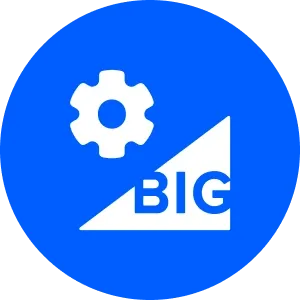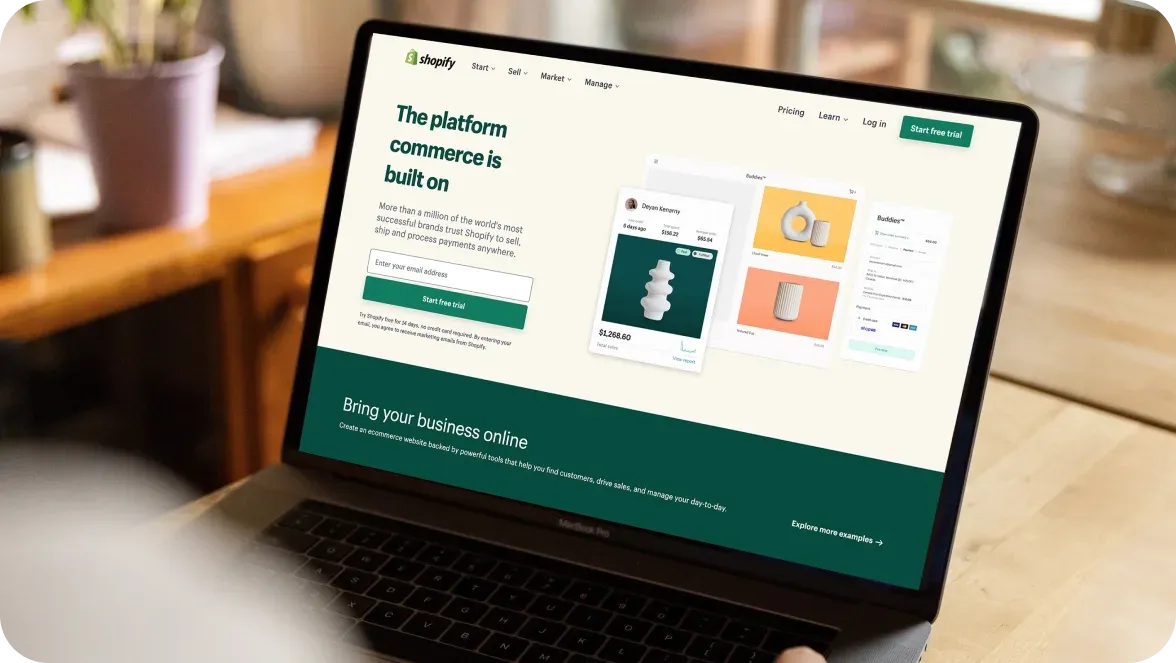
For 17 years, Etsy has been a unique example of a global craft business. Etsy was launched in 2005 and since then it has grown into a huge marketplace with 96.3 million active buyers of the wide range of vintage goods, including jewelry, bags, clothing, home décor and furniture, toys, art, craft supplies, and tools. Many entrepreneurs would love to repeat the success of Etsy. If you’re one of them, this article is for you.
We’ll discover how to make a website like Etsy, what strategies to use to monetize it, and how to scale successfully.
The history of success
The idea of creating Etsy belongs to the artist and businessman Rob Kalin. He realized that there were no analogs of such websites on the market for selling handmade goods. He partnered up with his two friends Chris Maguire and Haim Schoppic, and together they started to implement his idea without any experience in entrepreneurship.
The prototype of the future platform was finished in three months. After the project's successful completion, that was the time to name the platform. Kalin considered that the name had to be as extraordinary as the platform itself. The idea of the platform name came to Robert. He was a great fan of Italian movies and decided to use the Italian phrase "eh, si”, which after combining got such a strange sound like Etsy. Thus they considered Etsy as a great choice.
The platform started rapidly attracting the target audience and increasing the number of sellers. By July 2007, the number of sales had reached one million. The significant growth has helped to attract investment, resulting in receiving $27 million.
Today, Etsy is one of the leaders in the e-commerce industry. But what is the secret behind Etsy's success? How to create a website like Etsy? Below you’ll find the answers to these questions and more.
How does Etsy handle all payments?
Etsy's business model is a two-sided P2P marketplace that uses the vertical approach. Etsy handles all popular payment methods like PayPal, Adyen, Stripe Connect, Etsy gift cards, Etsy credits, etc.
There is a number of ways in which merchants can collect payments from their customers: through credit cards, debit, bank cards, Etsy gift cards, Etsy credits, etc.
There are plenty of monetization strategies for the marketplace. What kind of revenue model does Etsy use? Among the effective strategies in Etsy marketplace are:
Subscription fees
Like many other websites, Etsy uses subscription packages that offer multiple tools to boost sales. After joining the platform, a seller automatically has access to the Etsy Standard package, which offers a free suite of tools and capabilities. If sellers need advanced features and perks, they can sign up for Etsy Plus. Advanced features and bonuses of Etsy Plus include:
Extra tools for shop customization
Personal discounts on the packaging and promotional material such as boxes, business cards, and signage
Possibility to get a custom web address for an Etsy shop
Restock request function that lets customers keep up-to-date with in-stock reminders
Transaction fees
Another way of getting earnings for the Etsy platform is by charging a transaction fee. Every seller needs to pay 6.5 percent of each successful sale on Etsy. The processing fees are sent to the seller’s payment account and are deducted prior to the deposit. In case of issuing a refund for a sale, the payment processing fee will be credited proportionally and applied to the refund amount.
Etsy doesn’t charge transaction fees for sellers in the US and Canada unless the cost of sales tax is included in the listing price.
Payment processing fee
Etsy accepts credit cards and online payments. Each payment is subject to the payment processing fees. Etsy’s proprietary payment processor is used by default in 36 counties, which includes the US, UK, Australia, and Canada. The payment fee charged to a merchant is 3% + $0.25 per transaction. Otherwise, sellers can use PayPal to accept online payments.
PayPal and Square offer their services at around 2.9% + $0.30 per transaction. Buyers may pay by credit card, debit card, Etsy Gift Card, Etsy Credit, PayPal, some bank transfer services, Apple Pay, and Google Pay. They can also pay with their PayPal accounts. In that case Etsy Payments rates will apply.
The amount of payment processing fees vary depending on the country and the location of a bank account. The rate of 20% applies to all transactions subject to VAT.
Listing fees
Listing fees are the fees paid to list products for sale in a shop. Every time the seller adds a listing post it will be charged a listing fee.
A listing fee is quite a profitable revenue model for a marketplace like Etsy, as thousands of products are listed regularly on it. Each Etsy item is charged at least $0.20. The fee is charged regardless of whether the item is sold.
In-person selling fees
By integrating with Square, Etsy gets a holistic selling solution for viewing its real-time sales data. If the seller accepts payments in person for items listed on your Etsy site, they pay only the usual listing fees and Square’s payment processing fees.
The Square charges a 2.6% fee on the sale price, plus a $0.10 flat fee, for every swiped card payment. Etsy charges a fee of 3.5% of the sale price plus $0.15 for manually entered payments. If an Etsy seller’s account is not synced with Square, Etsy charges a $0.20 “Square manual” transaction fee.
Pattern tool fees
The Etsy marketplace provides a template to easily build a custom e-commerce website to accompany your Etsy shop. Sellers may find all existing Etsy inventory, payments, and order management tools, and all of the work the seller puts into an Etsy shop can be applied directly to a new separate website. The Pattern dashboard allows for choosing from five mobile-optimized themes: Chevron, Mosaic, Swatch, Stripe, and Trellis. Each piece helps give an exclusive look, feel and style to a website and highlights a particular aspect of a shop.
Once the website is launched, all changes in the Etsy shop are automatically displayed on the site, including adding new listings, managing inventory, changing prices and variations, and editing sections. You can also place orders directly from the Pattern site in the same way as in the Etsy shop. The bonus of using Pattern is managing orders in one place and getting access to all shop's existing tools, including delivery labels, conversations, and more.
There is a 30-day free trial. But after that, sellers are charged $15 per month, plus applicable tax.
Advertising fees
Advertisements help sellers grow their business and positively impact the overall member experience. Etsy offers sellers several advertising channels to promote their products, get more traffic and eventually increase sales. During the past few years, Etsy has rolled out some onsite and offsite ad tools for users such as:
Onsite ads: the seller can choose a daily budget using this option. The default minimum daily budget reaches $1.00.
Offsite ads: all users get access to the option but sellers who have made less than $10,000 in sales in the past year don't necessarily have to use it. The rate for such sellers is 15%; for others, it may vary from 12% to 15 % depending on annual sales. With this option, Etsy will promote products on major sites like Google, Facebook, Instagram, Pinterest, and Bing. The advertising fee is charged for the total order amount purchased from the Etsy shop within 30 days.
Currency conversion fees
To avoid foreign exchange charges, Etsy recommends sellers list their pricing in the same currency as their payment account currency. This allows sellers to avoid such currency exchange charges. Customers can use different currencies but, if they use a different currency, they will be charged a 2.5% currency conversion fee.
There is a chance to avoid currency exchange fees by receiving payments via PayPal.
Shipping fees
All shipping payments are also subject to a fee charge. Each shipping cost will be charged a fee in the amount of 6.5% of the total cost. If a seller offers free shipping to their customers, or builds shipping into the cost of the product, buyers still pay 6.5% in the form of a transaction fee.
Key features of the Etsy website
Etsy is a complex marketplace with a wide range of features for sellers and buyers. We will try to answer the question about how to make a marketplace like Etsy and what main features it must have:
Profiles
Profiles are a prerequisite for both buyers and sellers. The Seller profile appears when someone clicks on their name under the “shop info”. Here you can tell your story, add 5 large photos of a workspace, put links to social networks and introduce other team members. Seller profile includes all their product listings and enables review tabs.
Shopper profile includes their personal data, purchase history, and things that they have added to their Favorites list. Etsy platform is using follow-up activity. A user can follow someone who likes similar items so they can see what they find. When they follow shops, they get notice when they have new items. Also users can follow their friend's profile. Thus, they may see their favorites and any collections they’ve put together with items that they find on Etsy.
Listing pages
A product listing page (PLP) is a crucial part of the e-commerce experience. They share detailed descriptions of products and can heavily influence SEO rankings and internal link-building strategies. Therefore, it’s important to ensure the PLP experience is carefully designed too, thus these pages need to include:
A product description field with images
Variants of different sizes or colors
Seller’s reviews and ratings on each listing
Profile links or other related items
Navigation and search
Clear, intuitive navigation and search are crucial to the user experience and the best way to show what you offer. For marketplaces like Etsy, the most suitable way of search is by product category.
Online payments
Handling payments through an online marketplace platform is one of the most challenging tasks. In fact, the standard marketplace payment flow is a complex piece of software that enables internet merchants to accept card payments. They need to be safe, secure, convenient, and hassle-free. Moreover, marketplaces are subject to many regulations that dictate the way they must handle payments.
How to build a website like Etsy with DigitalSuits
Once you have validated your marketplace idea, it’s time to implement it. There are two approaches to start setting up your business:
- Development from scratch.
- Development by using other platforms.
Each way has its pros and cons. Are you willing to learn how much does it cost to build a website like Etsy? The cost will depend on two main aspects:
The development approach: out-of-box solution vs custom web development
The required functionality you want to implement
Developing a marketplace from scratch is a more complicated, time-consuming, and costly process. In a quickly changing and competitive market, it’s important to launch quickly, get first feedback, and adapt accordingly.
However, custom development allows you to build a highly scalable product with unique design and features.
In a nutshell, spending months and thousands of dollars on building a platform from scratch may be risky, as you may end up with a solution that provides many features but doesn’t match your users’ expectations.
Start building with us, as we have profound expertise in delivering a wide variety of IT-related services and custom build software solutions. Our team will help you build a marketplace that will address business needs and aid in the acquisition of competitive advantages.
Frequently asked questions
- How much does it cost to build a website like Etsy?
Building a multi-vendor marketplace like Etsy is a tough task. It combines stylish design, a user-friendly interface, and great places to shop online. The cost to hire a developer may vary from $30 to $150 per hour to build a multi-vendor marketplace website. Here at DigitalSuits, we offer marketplace development services and modern design solutions to help you build a product that’ll tap into your target market.
- What type of marketplace is Etsy?
Etsy is a peer-to-peer marketplace that provides an e-commerce platform for both buyers and sellers (artisans and craft makers). A peer-to-peer marketplace is a website that connects people who own a product or offer a service with people who want to buy or rent it. In Etsy’s case, the platform enables artists to sell handcrafted goods worldwide.
- How many items do you need to start an Etsy shop?
You may be surprised that you can start selling on Etsy with just one item. However, the more listings you have, the more visibility for your storefront you get. Search engine optimization and multiple easy-to-browse Etsy listings are key factors for building a successful Etsy store.





































Was this helpful?
0
No comments yet